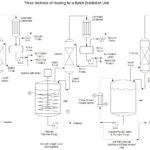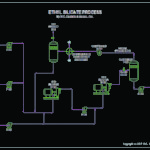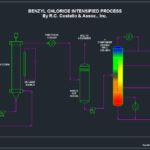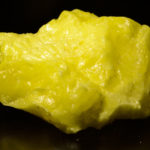Introduction All batch distillation designs start with a Gantt Chart and an annual production rate. In this example, we'll assume there are three cuts, a lights, a middle cut (or heart cut) and a heavies cut. Batch distillation is time dependent and requires preparation of time cycles on the Gantt chart so that each task can be estimated in minutes and the overall cycle … [Read more...]
Practical Examples of the HOLL-REACTOR® – Part 2
Part 2 of the Holl-Reactor® In this second installment of the Holl-Reactor®, we will discuss practical applications. Liquid-Liquid Reactions Mixing two liquid reactants is very typical. This is oftentimes done in a Continuously Stirred Tank Reactor (CSTR). Depending upon the physical properties of the two liquids, reaction times can be anywhere from minutes to … [Read more...]
Building Reaction Flowsheets Utilizing Process Intensification – Part 2
In the second part in this 2 part series of Building Reaction Flowsheets Utilizing Process Intensification, we show the production of ethyl silicate utilizing the Shock Wave Power Reactor by Hydrodynamics. This reaction system was originally a packed bed reactor followed by a large CSTR. In addition each reactor had a large distillation column associated with it to separate … [Read more...]
Building Reaction Flowsheets Utilizing Process Intensification – Part 1
In the first of this two part of the series, we will show two continuous chemical processes that utilize process intensification for chemical reaction systems and unit operations. The original processes were typically large bulky and spread out over significant plot space and also may have had high profiles. By introducing PI to these technologies a decrease in equipment … [Read more...]
Hydrogen Sulfide Removal from Wellhead Gas
Hydrogen sulfide (H2S) is a common but dangerous compound that is often found in natural gas wells. When the concentration of H2S exceeds 5.7 milligrams/m3, the gas stream is referred to as Sour Gas. This gas must be treated before it can be used in pipelines or plants. Hydrogen sulfide is particularly dangerous, as it is toxic at low levels. The gas has a characteristic … [Read more...]




